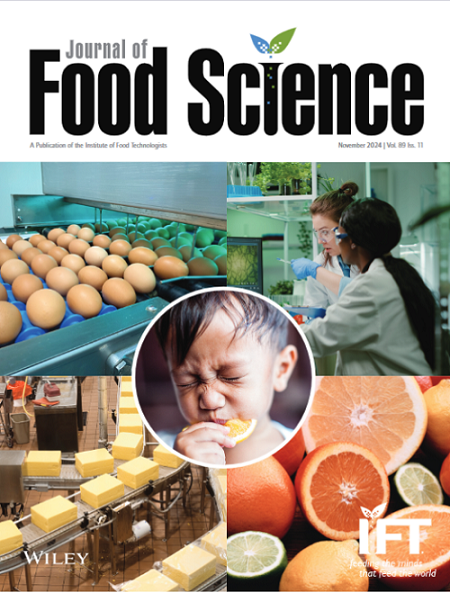A Lactococcus lactis Starter Culture Reduces the Bloater Defect in Cucumber Fermentations Brined With Low Salt
Abstract
The cucumber intrinsic Enterobacter and Leuconostoc generate sufficient carbon dioxide (CO2) in early fermentation, particularly those brined without sodium chloride, to induce bloater defects prior to the onset of Lactiplantibacillus pentosus. Because of the Lactococcus lactis short doubling time, it is proposed as a starter culture for cucumber fermentation brined with 342 mM (2%) sodium chloride to prevent bloater defects. A screening of putative decarboxylases (27) in the cucumber fermentation bacteriome identified substantially more of such enzymes in Enterobacteriaceae (24 or 89%) relative to lactic acid bacteria (10 or 37%). Co-inoculation of Lc. lactis and Leuconostoc or Enterobacter in Cucumber Juice Medium (CJM) resulted in reduced formation of acetic acid and ethanol. The Enterobacter population suffered a 4.7 log of CFU/ml of CJM reduction by 22 h when co-inoculated with Lc. lactis. A reduction in CO2 production and bloater index, from 32.1 ± 9.5 to 2.9 ± 0.9, was observed in the fermentation of pasteurized cucumbers co-inoculated with Lc. lactis and Enterobacter cancerogenus or Leuconostoc lactis. However, the bloater index increased in such fermentations when Leuconostoc fallax and Lc. lactis were co-inoculated. Fresh cucumber fermentations brined with 342 mM sodium chloride and inoculated with Lc. lactis, but not in combination with Lp. pentosus, resulted in reduced bloater defects. It is concluded that, a mixed starter culture of Lc. lactis with a lactic acid bacterium, other than Lp. pentosus may be useful in preventing bloater defects in cucumber fermentation brined with reduced salt.
Practical Applications
Prevention of bloater defects in commercial cucumber fermentation brined with reduced salt can reduce economic losses for processors and manufacturers. Bloater defects can affect up to 60% of a fermentation vessel. The control of such defects in cucumber fermentations using a Lc. lactis starter culture reduces but does not prevent bloater defects.


 求助内容:
求助内容: 应助结果提醒方式:
应助结果提醒方式:


